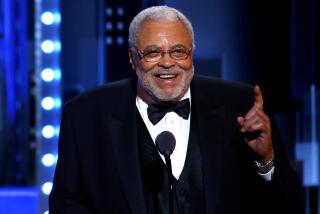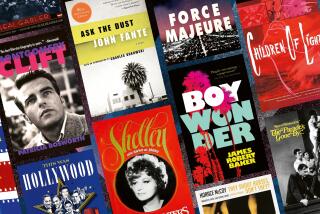A Second Look: Humphrey Bogart
The first great antihero of American movies, Humphrey Bogart remained the epitome of nonconformist cool for generations after his death. He succumbed to cancer in 1957 at age 57, and the course of his afterlife was sealed three years later by Jean-Luc Godard’s era-defining “Breathless,” in which Jean-Paul Belmondo played a Parisian thug who borrowed his insouciant swagger from the movies of his beloved “Bogey.”
The Bogey of the collective imagination was defined by his contradictions: a vulnerable tough guy and a cynical idealist. Almost everything about his persona seemed to be a gesture of defiance. He was a romantic hero who resisted sentimentality, a minimalist in an age of emoters. The most economical of actors, content to work with a restricted palette of snarls and glowers, he somehow turned his laconic brooding and hangdog insolence into a style guide for American masculinity and individuality.
The Bogart cult endures — he has lived on in dorm-room posters, retrospective revivals, pop-culture references and, of course, in the work of legions of imitators and parodists — and Warner Home Video capitalizes on it for the umpteenth time this week with the release of “Humphrey Bogart: The Essential Collection” ($99.98), a 24-film set that accounts for about a third of his filmography. Two key Bogart films are also being issued in Blu-ray high-def editions for the first time: “The Maltese Falcon” (1941) and “The Treasure of the Sierra Madre” (1948), both directed by John Huston.
Bogart worked with many of the major filmmakers of his day. Raoul Walsh, who directed him in “High Sierra,” among other films, understood the essence of the actor’s stoicism. (“You can kill off Bogart,” Walsh supposedly said. “The audience doesn’t resent it.”) Bogart made a couple of his best movies with Howard Hawks, “To Have and Have Not” and “The Big Sleep,” both of which paired him with the love of his life and ideal sparring partner, Lauren Bacall. He gave his most mythologized performance in Michael Curtiz’s “Casablanca” and perhaps his rawest one in Nicholas Ray’s “In a Lonely Place” ( Louise Brooks, in an essay titled “Humphrey and Bogey,” said that “the real Bogart” had much in common with the anguished screenwriter he plays in Ray’s film).
But Huston was Bogart’s most frequent collaborator (as well as a good friend), and “The Maltese Falcon,” the director’s first film, formed the cornerstone of the Bogart myth. Bogart was a late bloomer — he started on Broadway in the 1920s, and his first decade in Hollywood, during which he mostly played hoodlums and heavies and was generally overshadowed by James Cagney and Edward G. Robinson, suggested that he would have a character actor’s career at best.
“The Maltese Falcon,” the third Hollywood adaptation of Dashiell Hammett’s 1930 bestseller, was the film that allowed audiences to view Bogart as a leading man. He played the hard-boiled private eye Sam Spade in his customary style — world-weary, tough-talking — but since he was the nominal hero, there was also an aura of glamour and the barest hint of a heart. As he prepares to turn his duplicitous lover ( Mary Astor) over to the cops, he delivers what passes for a romantic kiss-off: “If they hang you, I’ll always remember you.”
Huston directed Bogart to an Oscar in 1951’s “The African Queen,” but their best work together was in “The Treasure of the Sierra Madre,” an anti-capitalist fable in the guise of a gold-rush adventure. Bogart’s Fred Dobbs is one of three prospectors who head into the Mexican wilds in search of riches (his younger colleague is played by Tim Holt and the older one by Walter Huston, the director’s father). The Huston character warns repeatedly that paranoid back-stabbing will start once the gold piles up, and Bogart, in one of his least sympathetic roles, enacts Dobbs’s greed-fueled spiral into madness and abjection without a trace of vanity. (It’s no surprise to learn that the film was an important influence on Paul Thomas Anderson’s “ There Will Be Blood.”)
In attempting to deflate the myth of Bogart, some have pointed out his limitations as an actor — which seems beside the point. The critic Kenneth Tynan summed it up best in a 1966 essay: “I don’t think we can say he was a great actor,” Tynan wrote, “but he remained, to the end, a great behaver.”
calendar@latimes.com
More to Read
Only good movies
Get the Indie Focus newsletter, Mark Olsen's weekly guide to the world of cinema.
You may occasionally receive promotional content from the Los Angeles Times.










